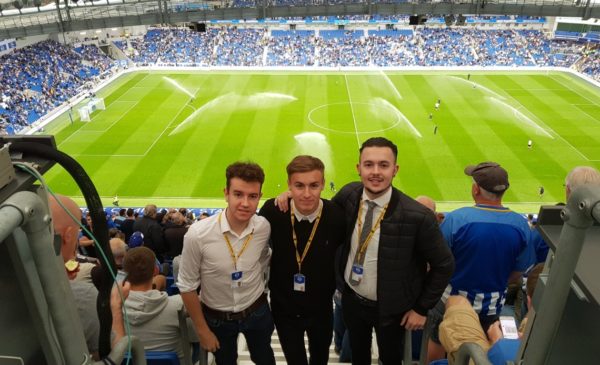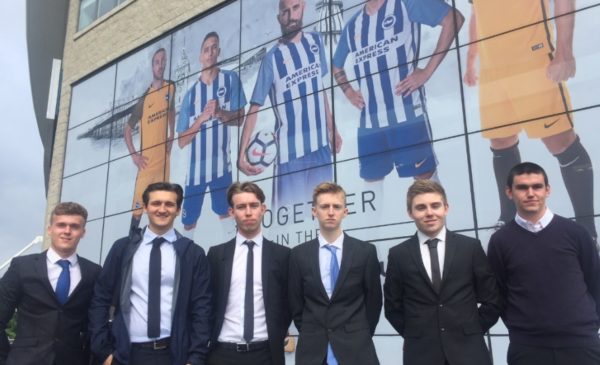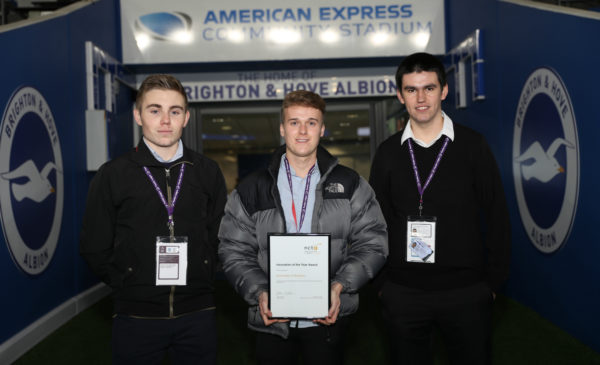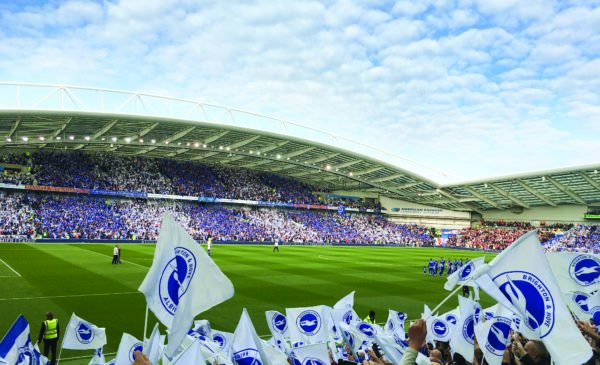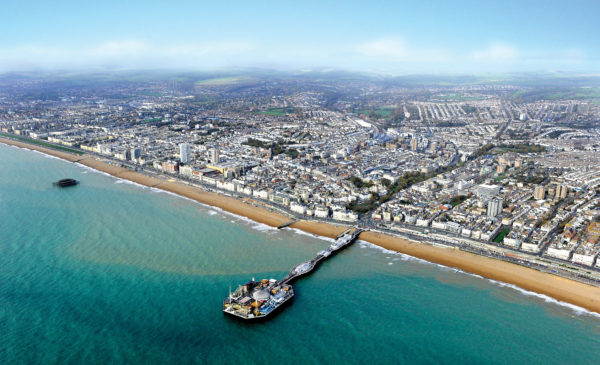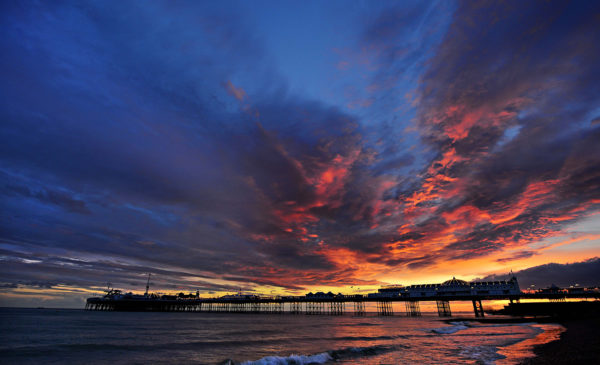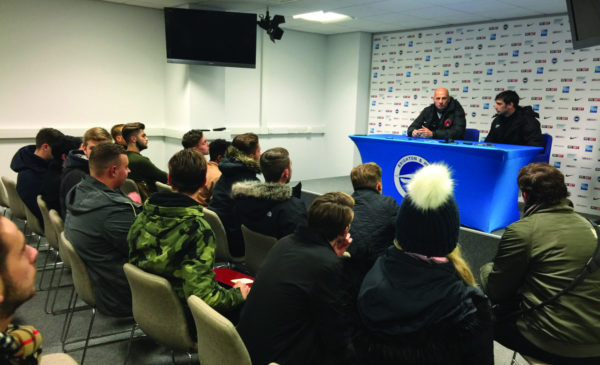The bell rings. Six dogs are poised in the starting traps as the hare shoots by. The doors ping open, and they are on their way to the first bend.
Greyhound racing offers a different kind of experience compared to any other sport. The tension in the air before the off and the adrenaline as they break away is unparalleled.
That graffitied race card clenched in hand as your dog goes 2 lengths clear down the straight with failed attempts to disguise the smug look on your face. Ensued by the inevitable I-told-you-so’s to your peers, of course.
Embed from Getty ImagesThough the winning roar of the crowd continues, it is scattered amongst the remaining punters in largely empty stadiums. Greyhound racing boomed in the 1920s and 30s with more than 90,000 people watching the Derby in 1936 and 200+ stadiums suited for the sport were littered in cities and towns across the UK. A popular pastime for families that was acknowledged in the 1934 Betting and Lotteries Act and attracted 19 million racegoers each year. Interwar Britain was the peak for going to see dog racing. It was viewed as a modernity and prevalent in the beginning of a cultural transformation in the UK.
Novelist J. B. Priestley recognised the growth of the sport in English Journey (1934) categorising what he saw on his travels across the UK in post-war England.
“Motor-coaches, wireless, hiking, factory girls looking like actresses, greyhound racing and dirt tracks, swimming pools, and everything given away for cigarette coupons.”
Priestley listed dog racing in his account of modern England and likened this new collective to its ‘birthplace’ of America.
The now infamous Wembley Stadium prioritised Greyhound racing from 1927 after public investment allowed the derelict stadium to be refurbished with lavish facilities and a new floodlit track. A cheap form of entertainment that pleased the masses and gathered enormous crowds – even through the late 1930’s amidst the Great Depression.
The dogs were even finding celebrity status. Mick The Miller was the first Greyhound to win 19 races in a row and became the poster-dog for UK Greyhound racing. He featured in the film Wild Boy (1934) before being inducted into the American Hall of Fame in 1981.
The novelty of the sport wore out quickly with the middle class in the mid-30s as they sought out the new fashionable trends and Greyhound racing was becoming viewed as a working-class sport; sometimes even regarded as ‘poor man’s racing’. Spectatorship and interest skyrocketed after World War 2 as 1946 was the biggest year for the Greyhound industry with the annual turnover equating to £8 billion in today’s value. However, soon came the rapid decline in attendance and popularity.
Francis Gentle, the chairman of the Greyhound Racing Association Trust complained about a “discriminatory and unjust taxation” towards gambling revenue in the sport. Off-the-course betting was untaxed, as was all forms of Horse Racing betting. The frustrations were fair. The disparity in treatment of a sport deemed as working-class compared to racing for the middle-class was evident. Dog racing offered opportunity for legal working-class gambling – and those in opposition worked hard to shut down and ban this form of sports betting. The authorities wished to control and limit how the lower classes spent their leisure time. Though they never succeeded in banning gambling for Greyhound racing, the taxing continued.
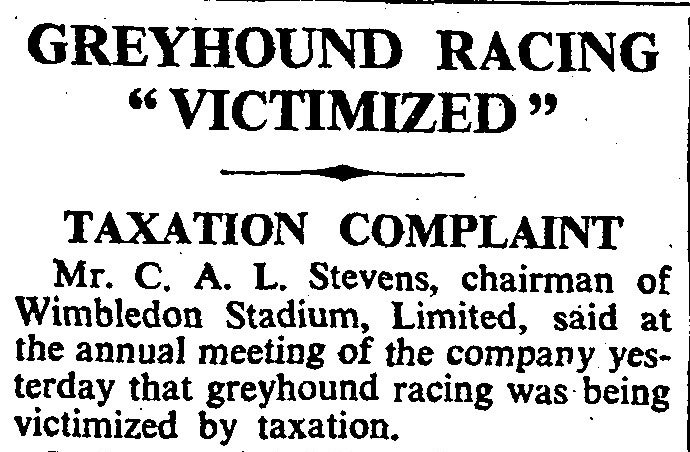
The 60s was a torrid decade for the sport. The public were exposed to the cruel conditions that some racing dogs would live under. The welfare of the dogs and the lack of regulations in place to protect the greyhounds was rightfully questioned. Other forms of entertainment gained popularity and racing was left behind. The 1960 Betting and Gaming Act legalised off-course betting – and with bookmaker shops lining the streets, attendances dipped as punters no longer had to go to the stadium to place a bet.
Stadiums began to close due to the decline in interest, in combination with the harsh taxing and off-course bookmaker shops. The sport continued to fade out in the 70s – but gained attention once more in the 80s with the arrival of Ballyregan Bob and Scurlogue Champ.
Embed from Getty ImagesBob became a household name with his world record of 32 consecutive victories, in which the BBC Nine O’clock news was interrupted to show his record-breaking run at Hove in 1986. At the same time, Scurlogue Champ caught the public’s eye with masterful comebacks – dropping last of the half dozen round the first few bends, tailing off halfway before rocketing through his opponents and stealing gold at the line.
Unfortunately, it wasn’t enough to keep the sport alive. Terrestrial TV coverage stopped in the late 90s and the plateau pursued.
A new millennium arrived, the new technology of live streaming and online gambling benefitted dog racing to become accessible from a device in your hand. Ironically the bookies were the saviours. Coral and Ladbrokes purchased stadiums and the Bookmakers Afternoon Greyhound Service (BAGS) meetings funded by these companies thankfully kept the stadiums running but solely for the purpose of gambling.
I spoke to Steve, an ex-owner of racing greyhounds who visited a rather quiet evening meeting at Hove Stadium.
“I used to own a few dogs back in the 80s – I was obsessed with the sport. I went to Ireland and lost a load of money doing so. You’ve got to have a bit a luck with it. My dogs never quite reached the level and I found myself gambling and losing and chasing the losses each evening,” Steve reminisced as he acknowledged the gambling culture of the sport and how it spiralled at times.
Embed from Getty ImagesI was surprised by his honesty as he went on to explain it was his first visit to watch a greyhound meeting “in around six or seven years”. He was dining at the stadiums in-house restaurant with his wife and son placing minimum bets to keep the interest in the races alive.
“I could never get silly with it now. It’s just a bit of fun,”
My conversation with Steve raised questions about greyhound racings position in responsible gambling and how that is addressed in the present day. Coral adopts affordability checks in their stadiums and plaster safe gambling notices wherever possible – but betting applications and websites make the opportunity to gamble as accessible as ever.
Winston Churchill coined the term “animated roulette” as he disregarded dog racing in 1928. A critical statement that holds relevance nearly a century on with a whole new meaning. Many newcomers to the sport will have placed a bet online and watched a live stream of a greyhound race. Animated pixels on their mobile screens in thirty second bursts, which largely contributes to the estimated profit of £250 million per year that bookies rake in from the greyhound industry.
Embed from Getty ImagesSports betting companies have supported the welfare of the dogs and funded retirement plans and rehoming schemes for ex-racing greyhounds. The Greyhound Board of Great Britain have recently announced their long-term welfare strategy ‘A Good Life for Every Greyhound’. The strategy outlines strict regulations and plans for retirement before a dog has even run their first race. The GBGB and the bookies constant effort to maintain a squeaky-clean record towards the animal’s well-being is indicative to the sports future.
Greyhound racing proceeds to have a diminishing appeal in the UK with only 21 licensed tracks open to the public, although the future of the sport seems to be in safe hands.
For as long as there is profit for the bookmakers to fund the stadiums and the focus remains on greyhound welfare – the quintessential working-class sport with years of history will continue to live on.

